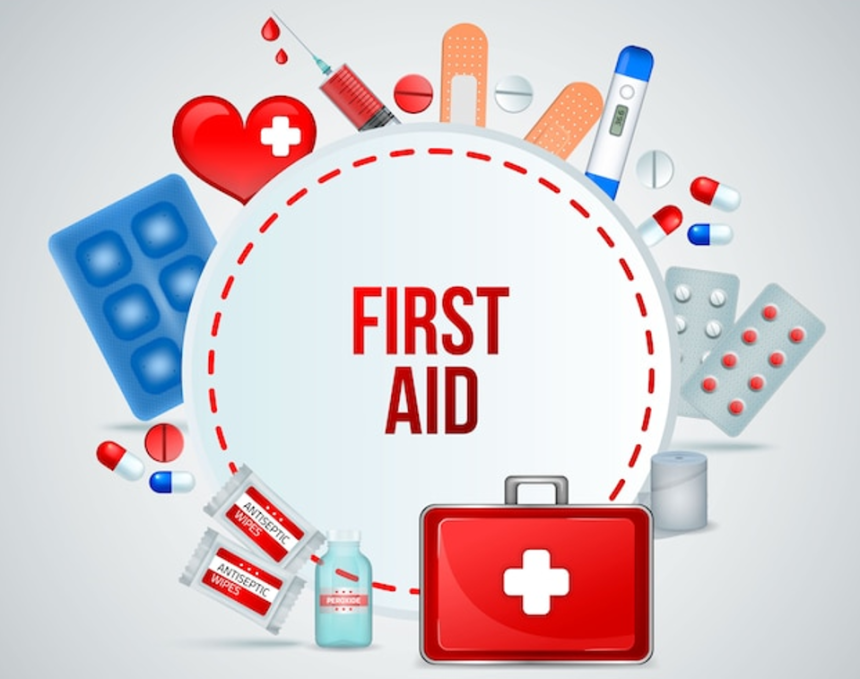In recent years, there has been a growing trend in schools worldwide: the incorporation of first aid training into the curriculum. This shift reflects a broader recognition of the importance of equipping students with practical life skills that extend beyond traditional academic subjects.
First aid training in schools not only prepares young individuals to respond effectively to emergencies but also fosters a sense of responsibility, community, and self-confidence.
Why First Aid Training in Schools Matters
Imagine a world where every student, regardless of age or background, possesses the knowledge and skills to save a life in a moment of crisis. In recent years, this vision has been gaining momentum as an essential aspect of education worldwide. First aid training in schools is not merely a trend but a transformative shift in educational priorities. It matters profoundly, shaping the way we prepare our young generation to navigate a complex and unpredictable world.
Here are some compelling reasons why first aid training in schools matters.
Emergency Preparedness from an Early Age
One of the primary reasons for introducing first aid training in schools is to instill a sense of emergency preparedness from an early age. Accidents and medical emergencies can happen anywhere and at any time. Whether it’s a simple cut or a more serious situation like someone choking or experiencing cardiac arrest, having basic first aid knowledge can make a significant difference. By teaching students how to respond to these situations, schools empower them to be proactive and confident in assisting others when necessary.
Saving Lives
The ability to provide immediate assistance during emergencies can mean the difference between life and death. According to the World Health Organization (WHO), injuries are a leading cause of death among young people. First aid training equips students with the skills needed to stabilize a person’s condition until professional medical help arrives. This can be particularly crucial in situations where every second counts, such as accidents on the playground or sports field.
Promoting Good Samaritan Behavior
First aid training not only imparts practical skills but also promotes a culture of caring and empathy. When students learn how to assist others in distress, they are more likely to step up and help when the need arises. This kind of “Good Samaritan” behavior fosters a sense of community and social responsibility, reinforcing the idea that we are all connected and should look out for one another.
Building Confidence
Learning how to handle medical emergencies boosts self-confidence. Knowing that they possess the skills to respond effectively in crisis situations can empower students and give them a sense of accomplishment. This confidence can extend beyond first aid situations, positively influencing various aspects of their lives, including decision-making and problem-solving.
How Early Should You Start Teaching Kids First Aid?
Age-appropriate first aid training is essential to ensure that children can grasp the concepts and skills without becoming overwhelmed. Registered Training Organizations (RTOs) such as The First Aid Course Canberra offer specialized programs designed for different age groups, tailoring the training to meet the developmental needs of each stage.
- Preschool (Ages 3-5): At the preschool level, basic first aid concepts can be introduced in a simple and engaging manner. Children can learn to recognize common dangers, like hot surfaces, and how to respond by shouting for help or seeking assistance from adults. Age-appropriate training should focus on building their confidence and teaching them to identify hazards.
- Elementary School (Ages 6-11): In elementary school, children can begin to grasp more complex first aid concepts. Training can include teaching them how to use basic first aid supplies like adhesive bandages and how to apply first aid for minor cuts, scrapes, and bruises. They can also learn how to call emergency services in case of more serious situations.
- Middle School (Ages 12-14): At this stage, students can be introduced to more comprehensive first aid training. They can learn CPR techniques appropriate for their age group and how to use an automated external defibrillator (AED). Understanding the basics of responding to choking incidents and providing initial care for fractures and sprains can also be part of their training.
- High School (Ages 15-18): Older students can receive more advanced first aid training, including the recognition and response to a wider range of medical emergencies. This can include assessing and managing severe bleeding, providing initial care for burns, and understanding the signs and symptoms of common medical conditions like allergic reactions or seizures. CPR and AED training can be more comprehensive, aligning with adult-level skills.
The Takeaway
Incorporating first aid training within the school context from an early age ensures that students are not only equipped with life-saving skills but also develop essential qualities such as confidence, empathy, and a strong sense of social responsibility within their educational communities.
Registered Training Organisations (RTOs) that deliver nationally recognised first aid courses play a pivotal role in age-appropriate first aid programs tailored to the unique needs of each age group. By integrating first aid education into the school system, we not only prepare students for a safer school environment but also cultivate a generation of responsible, caring, and prepared citizens ready to make a difference in their communities.















